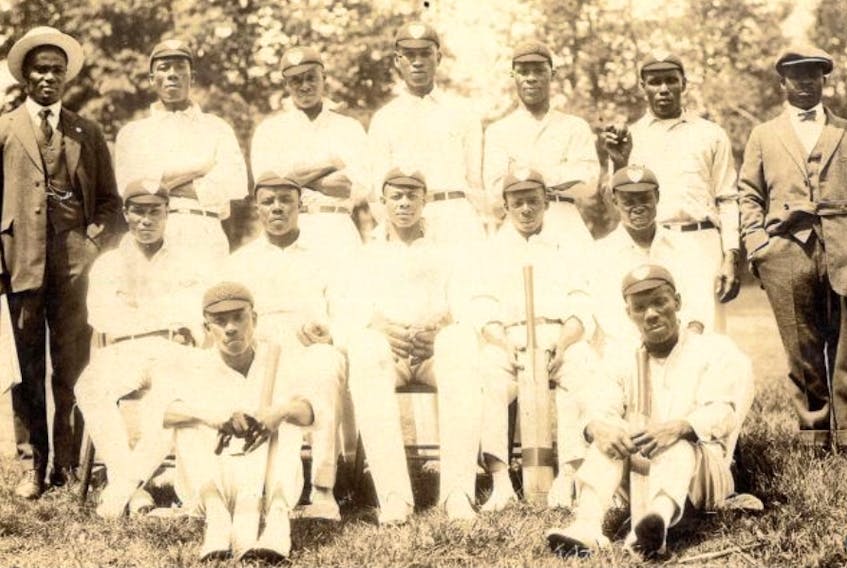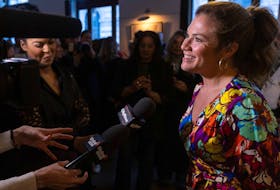The earliest references to cricket were in England in the 16th century and according to authors John and Robert Reid, “when cricket was first played in what became Canada’s Maritime provinces will never be known.”
It may have started as a garrison sport or may have been brought to the area by immigrants.
Records indicate a Halifax Cricket Club existed in 1842. By the 1860s matches were being played in Halifax between the garrison officers and the enlisted men. By the late 1860s cricket was being played in Yarmouth, Charlottetown, Fredericton, Saint John, Moncton and Sackville.

In October 1869, a match between Sydney and North Sydney, was described as being a celebration of “our national game.” According to the Reids, “Both clubs had been recently formed, but the article noted that cricket clubs in the area have been in operation for a great number of years.”
The first Nova Scotia county cricket league started in 1897 in Pictou with teams from Albion Mines, New Glasgow, Stellarton, Thorburn and Westville. By 1907, various Cape Breton coal mining communities formed a county league. Bridgeport, Dominion, New Aberdeen and Sydney Mines joined the larger communities of Sydney and North Sydney.
After the turn of the 20th century, Industrial Cape Breton became the home of an “exceptionally diverse cricket culture” characterized by the working-class as well as African-descended West Indians who came to work at the recently opened steel plant in Sydney. Cricket teams also developed out of where the men worked. The Dominion Iron and Steel Company Ltd. plant sported a DISCO team and an open hearth team.
In 1906, the Nova Scotia Cricket League was formed and included the long-established Halifax Wanderers and the Garrison Club. The Sydney Cricket Club joined in 1909. It drew heavily on the best cricketers from the steel plant men including white-collar workers, chemists and working-class Caribbean immigrants of African descent, including William Knight and Alfred Prescott.
In August 1912, the Halifax Herald reported on a match between the Wanderers and the Fenwicks, a new team that took the place of the Caribbeans of former years. As early as 1902, the Wanderers had played a match against a West Indian team comprised entirely of Black men and in earlier seasons played army or navy teams that included players of African descent.
In 1914, the Caribbean men of Sydney entered a team into the Nova Scotia Cricket League as the Whitney Pier Cricket Club which was likely the second team of all-Black cricket players in Nova Scotia. Many people showed up to watch the first match between the Sydney and Whitney Pier teams.
The Sydney Daily Post reported:
“In every phase of the match the visiting cricketers from Whitney Pier made a most favourable impression. Wearing brand new, tailormade flannels, the material having been especially imported from England, and made up locally, cricket caps of English make and embodying the coolers (colours) of the Whitney Pier cricket club, every man on the eleven an enthusiast and by individual and team work showing a thorough knowledge of the game, ideal cricket deportment on the part of each player, the entire eleven men on the ground sharp on time, an opportunity to display for a drawn game, but as thorough sports disdaining to play anything but absolute gentleman’s cricket.”

The Reids note that the Post and other newspapers didn’t normally “comment on the dress or deportment of sports teams.” But in the case of Whitney Pier and its players of African descent, the writer fit the news story of the “visiting cricketers from Whitney Pier” into an “English and a gentlemanly context” in the above lengthy sentence.
Earlier Post stories said, “Sydney was a cricket leader throughout Eastern Canada.”
Unfortunately, the First World War brought an end to the Nova Scotia Cricket League and any hope the all-Black team from Whitney Pier had of winning a provincial championship.
The last provincial cricket champions from Cape Breton was a Sydney team in 1912. The 1913 championship ended in a dispute and the 1914 championship never happened.
The Whitney Pier Cricket Club morphed into the West Indian Cricket Club and played in club leagues during the 1920s and 1930s. It survived for many decades afterwards as a social club.
Nowadays a group of Cape Breton University students from India are often seen playing cricket on local fields.
Paul MacDougall is a local writer and senior instructor in health sciences at Cape Breton University.









